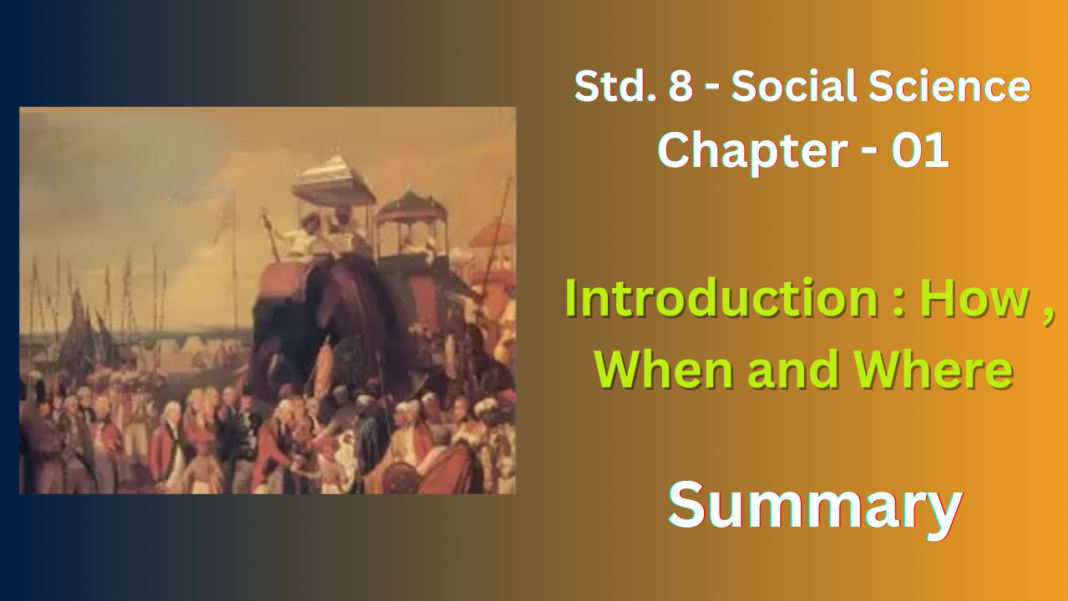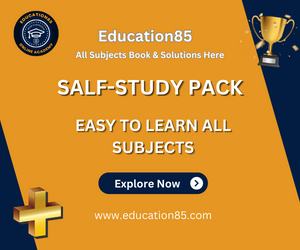NCERT Solutions for Class 8 History Chapter 1
The introductory chapter of your 8th grade history textbook, “Introduction How When and Where,” establishes the basis for understanding how we study the past. It explains that history involves more than simply memorizing dates and events.
Here’s a gist of the chapter:
History as a Story: It emphasizes that history is a continuous story about change and development over time. By comparing the past with the present, we gain a deeper understanding of how things came to be.
The Importance of “How, When and Where”: These three questions—How, When, and Where—serve as guiding lights for historians. They aid in understanding the causes and consequences of events, determining when they occurred, and identifying their geographical locations.
Beyond Dates and Rulers: The chapter transcends the traditional view of history that focuses solely on dates, kings, and battles. It encourages us to explore the lives of ordinary people, social structures, economic systems, and cultural practices.
In essence, this chapter equips you with the tools to approach history as a detective, asking questions and piecing together evidence to uncover the rich tapestry of the past.
NCERT Solutions for Class 8 History Chapter 1
Exercise
- State whether true or false:
(a) James Mill divided Indian history into three periods – Hindu, Muslim, Christian.
(b) Official documents help us understand what the people of the country think.
(c) The British thought surveys were important for effective administration.
Ans :
(a) False
(b) False
(c) True
- What is the problem with the periodisation of Indian history that James Mill offers?
Ans : The main problem with James Mill’s periodisation of Indian history is that it relies solely on the religion of the rulers. Here’s why it’s problematic:
Ignores Religious Diversity: India boasts a rich tapestry of religions that extend beyond Hinduism and Islam.
Oversimplification: This classification creates a very simplistic view of a complex historical narrative. It suggests a clear-cut shift between periods, which wasn’t always the case. Continuity and cultural exchange often persisted even amid political change.
Focus on Delhi Sultanate: Mill primarily based his periodisation on rulers of the Delhi throne.
This overlooks the rich histories of regional kingdoms and empires that coexisted across the Indian subcontinent.
- Why did the British preserve official documents?
Ans : The British preserved official documents for several reasons:
Evidence and Justification: They acted as records of decisions and actions, offering justification and proof for past policies.
Future Reference: These documents were valuable resources for future administrators, providing insights into past successes and failures.
Importance of Writing: The British valued written records as a reliable way to document information. They believed written communication facilitated clear understanding and future discussions.
- How will the information historians get from old newspapers be different from that found in police reports?
Ans : Historians will find several key differences between information gleaned from old newspapers and police reports:
Perspective: Newspapers frequently mirror the public’s viewpoint and the prevailing social opinions of their time. Police reports, on the other hand, focus on the official narrative and details relevant to the investigation.
Bias: Newspapers can exhibit biases based on their editorial stance, whereas police reports strive for objectivity, though unintentional bias may still occur.
Scope: Newspapers cover a wider range of events, including social issues, cultural trends, and everyday life.
Police reports generally focus on specific crimes and incidents.
- Can you think of examples of surveys in your world today? Think about how toy companies get information about what young people enjoy playing with or how the government finds out about the number of young people in school. What can a historian derive from such surveys?
Ans : Surveys are everywhere today! Here are some examples:
Market Research: Toy companies employ surveys to understand children’s preferences for games and characters.
Census: Governments conduct surveys, such as the census, to collect data on population size, age distribution, and education levels. Historians can analyze these surveys to learn about:
Public Opinion: Surveys reveal what people thought and cared about at a specific time.
Social Trends: Changes in survey responses over time can show how interests and priorities evolve.
Government Policies: Surveys may have been utilized to inform policies concerning education, healthcare, or social welfare.
NCERT Solutions for Class 8 History Chapter 1
FAQ’s
How does Chapter 1 of NCERT Solutions for Class 8 History introduce historical study?
NCERT Solutions for Class 8 History Chapter 1 introduces historical study by emphasizing the importance of asking questions like “How, When, and Where” to explore past events in depth.
What topics are covered in NCERT Solutions for Class 8 History Chapter 1?
NCERT Solutions for Class 8 History Chapter 1 covers the introduction to historical study, focusing on understanding the significance of “How, When, and Where” in examining past events.
Why is understanding the foundations of historical study discussed in NCERT Solutions for Class 8 History Chapter 1 important?
Understanding the foundations of historical study helps students develop critical thinking skills and gain a deeper appreciation for the complexities of the past.
How can NCERT Solutions for Class 8 History Chapter 1 enhance students’ understanding of historical study principles?
NCERT Solutions provide detailed explanations and answers to questions in Chapter 1, aiding students in grasping key concepts and enhancing their understanding of historical study principles.
What is the main takeaway from NCERT Solutions for Class 8 History Chapter 1?
The main takeaway from Chapter 1 is the importance of asking critical questions and considering context, timing, and geography when studying historical events.









